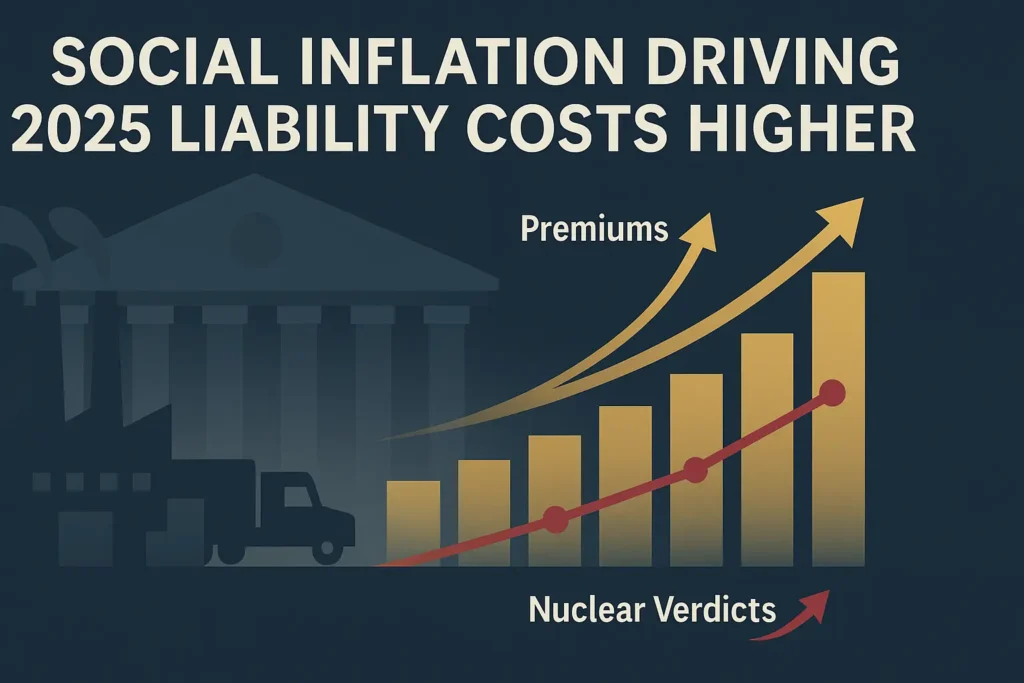Marcus Thompson, owner of a digital marketing agency in Austin, discovered the financial consequences of inadequate business insurance when a former employee filed a wrongful termination lawsuit seeking $150,000 in damages. His basic general liability policy excluded employment practices claims, forcing him to hire attorneys at $450 per hour while facing potential personal asset exposure that threatened both his business operations and family home.
Business insurance provides financial protection for commercial enterprises through coverage addressing property damage, liability claims, employee injuries, and business interruption losses. Companies pay annual or monthly premiums in exchange for protection against various operational risks that could otherwise result in significant financial losses or business closure during legal disputes and unexpected events.
The American commercial insurance market serves millions of businesses across diverse industries and company sizes. According to the Insurance Information Institute, commercial lines insurance generated $310.2 billion in direct written premiums during 2022, representing approximately 43% of the total property-casualty insurance market and reflecting the critical role of business insurance in the national economy.

Coverage Options Explained
Business Insurance Market Analysis
Commercial insurance costs vary significantly based on industry classification, company size, geographic location, and specific coverage needs. The Small Business Administration provides guidance on insurance requirements for different business structures, while state regulations establish minimum coverage requirements for various commercial activities and employee protection obligations.
Industry risk profiles influence business insurance pricing through actuarial analysis of claim frequency and severity patterns. Construction companies face higher workers compensation costs due to injury rates, while technology businesses may require enhanced cyber liability coverage reflecting data breach risks. Professional service firms typically need errors and omissions coverage addressing potential mistakes in client services.
Current commercial insurance market conditions reflect several significant trends:
- Business insurance costs increased across most coverage lines due to inflation impacts on claim settlements
- Cyber insurance requirements expanded as businesses face growing digital security threats and regulatory compliance demands
- Workers compensation costs vary dramatically by state due to different benefit structures and regulatory environments
- Employment practices liability claims increased as workplace regulations evolved and employee awareness grew
The National Association of Insurance Commissioners tracks commercial insurance data showing regional variations in coverage requirements, premium costs, and claim patterns affecting business insurance decisions across different markets and regulatory jurisdictions.
Car Insurance Coverage Analysis
Small Business Insurance Costs
Small business insurance costs depend on multiple factors including industry type, employee count, annual revenue, and coverage selections. Service-based businesses typically require lower premiums than manufacturing or construction companies due to reduced property and liability exposures. State workers compensation rates, local liability risks, and building values significantly influence total insurance expenses for small business operations.
Professional Liability Insurance Protection
Professional liability insurance covers claims arising from professional services, advice, or expertise provided to clients. This coverage addresses errors, omissions, negligence, and failure to deliver promised services that result in client financial losses. Professional liability policies typically include legal defense costs and settlement payments, though coverage excludes intentional wrongdoing and certain business activities outside professional service provision.
Workers Compensation by State Requirements
Workers compensation insurance requirements vary significantly across states through different benefit structures, premium calculation methods, and coverage mandates. Some states operate monopolistic funds requiring employers to purchase coverage through state-run programs, while others allow competitive markets with multiple insurance carriers. State workers compensation boards establish benefit levels, medical fee schedules, and return-to-work programs affecting employer costs and employee protections.
Business Insurance Compliance Requirements
Business insurance requirements depend on company structure, industry regulations, and contractual obligations with clients, lenders, or property owners. State licensing requirements may mandate specific coverage types and limits for certain professions, while federal regulations establish insurance requirements for government contractors. Lease agreements often require tenant liability coverage, while loan agreements may mandate property insurance protecting lender interests.
Commercial Auto Insurance Coverage
Commercial auto insurance covers vehicles used for business purposes through specialized policies addressing commercial use risks not covered under personal auto insurance. Coverage includes liability protection for accidents involving business vehicles, physical damage coverage for company-owned vehicles, and protection for employees driving personal vehicles on company business. Commercial auto policies typically provide higher liability limits reflecting increased exposure from business vehicle operations.
Cyber Insurance for Business Protection
Cyber insurance addresses data breach response costs, business interruption from cyber attacks, and liability claims from compromised customer information. Coverage typically includes forensic investigation costs, notification expenses, credit monitoring services, and regulatory fines from data protection violations. Cyber insurance policies exclude certain attack types while requiring specific security measures and incident response procedures from policyholders.
Business Insurance Policy Structures
Business insurance markets offer various policy combinations designed to address different industry needs, company sizes, and risk exposures. Business Owners Policies combine property and liability coverage in single packages designed for small to medium enterprises, providing cost-effective protection through standardized coverage forms and simplified underwriting processes.
Commercial Package Policies allow larger businesses to customize coverage combinations including property, liability, commercial auto, and workers compensation through coordinated policy structures. These comprehensive packages provide flexibility while maintaining coverage coordination across different insurance lines and policy periods.
Industry-specific insurance programs address specialized risks through tailored coverage designed for particular business sectors. Professional liability, errors and omissions, and malpractice insurance serve service industries, while product liability and completed operations coverage address manufacturing and construction exposures through specialized policy language.
Self-insurance options allow large companies to retain certain risks rather than transferring them to insurance carriers through alternative risk financing arrangements. Self-insured workers compensation programs require state approval and financial guarantees, while captive insurance companies provide controlled insurance arrangements for specific risk categories.
Excess and umbrella coverage provide additional liability limits above underlying insurance policies, protecting businesses against catastrophic claims exceeding primary coverage limits. These policies activate after underlying coverage is exhausted, providing broader protection against various liability exposures through comprehensive policy language.
Risk management services offered by insurance carriers help businesses identify and control loss exposures through safety programs, claims management, and regulatory compliance assistance. These value-added services support loss prevention while potentially reducing insurance costs through improved risk profiles and claims experience.
This information describes general business insurance concepts based on industry data and regulatory guidance. Commercial insurance coverage requirements and options vary by state, industry, and individual business circumstances. Companies should consult current policy documents and qualified professionals for specific coverage decisions.



















